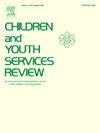马尼托巴省的“跨界儿童”:儿童保护系统、青少年刑事司法系统和第一民族身份的交集
IF 1.7
2区 社会学
Q1 FAMILY STUDIES
引用次数: 0
摘要
使用来自加拿大马尼托巴省的相关人口管理数据,我们确定了所有1994年出生的儿童,并跟踪他们到成年早期。我们考察了社会人口统计学、教育成就、参与儿童保护服务(CPS)、司法系统联系和原住民身份。我们调查了在CPS的家庭外护理和在青少年刑事司法系统中被指控犯罪之间的重叠程度,以及作为第一民族与这些系统的交集。我们发现36.4%的青少年在12-17岁之间有过刑事指控,而没有CPS历史的青少年中这一比例为3.8%。虽然第一民族在马尼托巴省人口中所占比例不到15%,但他们却占了57%的受照料儿童和50.2%的有刑事指控的青少年。与马尼托巴省其他地区的青年相比,有过看护和犯罪记录的第一民族青年人数是其10倍以上。减少儿童服务中心照顾的儿童数量有可能减少青少年刑事司法系统的参与。减少受照料儿童数量的行动应以解决社会经济差距和系统性歧视的政策为基础,并通过以社区为基础的第一民族主导的方案。为解决悲伤和创伤而采取的比例、及时和文化上适当的法外措施可以减少随后的司法系统介入。受儿童保护和青少年刑事司法交叉影响最严重的社区——边缘化、种族化和少数群体——的参与对于有效的方案和政策制定至关重要。本文章由计算机程序翻译,如有差异,请以英文原文为准。
‘Crossover kids’ in Manitoba: The intersection of the child protection system, youth criminal justice system and First Nations identity
Using linked, population-wide administrative data from Manitoba, Canada, we identified all children born in 1994 and followed them into early adulthood. We examined sociodemographics, educational achievement, involvement with child protection services (CPS), justice system contacts, and First Nations identity. We investigated the extent of overlap between ever being in out-of-home care of CPS and being charged with a crime in the youth criminal justice system, and how being First Nations intersects with these systems. We found that 36.4% of youth ever in care had a criminal charge between age 12–17, compared with 3.8% of youth with no CPS histories. Although First Nations comprise less than 15% of the Manitoba population, they accounted for 57% of children in care and 50.2% of youth with a criminal charge. More than 10 times as many First Nations youth had both a history of being in care and were charged with a crime, compared with all other Manitoba youth.
Reducing the number of children in CPS care has the potential to reduce youth criminal justice system involvement. Actions to reduce the number of children in care should be based on policies that address socioeconomic disparities and systemic discrimination and through community-based First Nations-led programs. Proportional, timely and culturally appropriate extra-judicial measures geared toward addressing grief and trauma could reduce subsequent justice system involvement. Engagement of the communities most affected by the cross-over between child protection and youth criminal justice – marginalized, racialized, and minoritized populations – is essential for effective program and policy development.
求助全文
通过发布文献求助,成功后即可免费获取论文全文。
去求助
来源期刊

Children and Youth Services Review
Multiple-
CiteScore
6.30
自引率
6.10%
发文量
303
期刊介绍:
Children and Youth Services Review is an interdisciplinary forum for critical scholarship regarding service programs for children and youth. The journal will publish full-length articles, current research and policy notes, and book reviews.
 求助内容:
求助内容: 应助结果提醒方式:
应助结果提醒方式:


